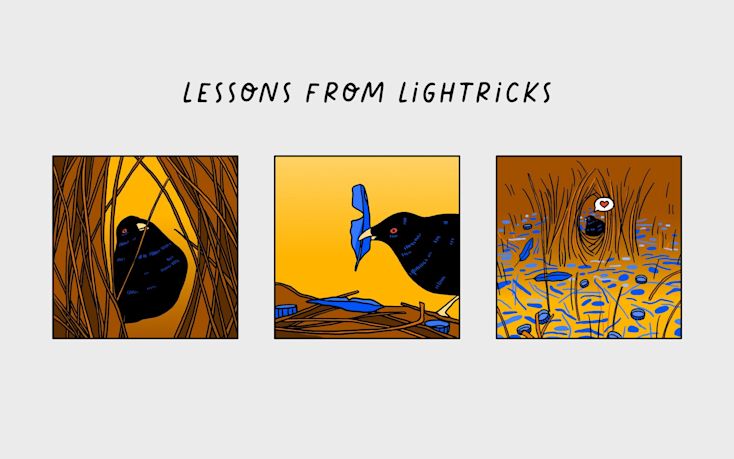People success tips for UX research managers

Being a UX research leader is a challenging job. You’ve created a vision and a hiring strategy. You’ve gone through the process of thoughtfully hiring new team members. Every day, you build and nurture relationships with important stakeholders in your organization and champion insights-driven decision-making.
Depending on your organization’s maturity and level of experience, this might already feel like a full plate. What could be more critical than shifting your company’s view toward their users and research in general? Especially for a researcher, could there possibly be a nobler undertaking?
There is: In addition to all these responsibilities, you are a people manager.
Let’s pause for a minute. You’re in this role because you are an expert at what you do. You can make sound arguments, understand people’s perspectives, and persuade them to consider yours. But you’re also in this role because you chose people management. In people management, your expertise will take you far. But it won’t take you all the way—because we’re now talking about professional responsibility for other human beings.
In my time managing people at digital product companies, HR has framed people management as a high calling with duties like assigning and guiding work priorities, conducting performance reviews, and ensuring reports feel cared for within the organization. The role is accomplished through a skilled combination of mentorship and coaching. As a UX research manager, this responsibility falls on your shoulders.
Borrowing from multiple definitions, “from the heart” means to do something sincerely, free from pretense, not dishonestly or hypocritically. Let’s talk about three ways you can manage from the heart: focusing on how your reports will feel when they leave your team, viewing the one-on-one with your reports as an exclusive space for their growth, and creating and regularly steering a plan for their future success.
From the start, focus on the end
Management is like being in a relationship that you know will end someday. Ideally, when the relationship ends, your team member will leave feeling like they’ve had a positive experience: they’ve grown as a professional, and they’ve had a trusting, supportive relationship with you, their manager.
Acknowledging this finite factor may seem a bit taboo. After all, we don’t enter other types of relationships like friendships or romances expecting them to end—we often hope they will last a lifetime. However, nearly all employees will leave their role one day due to a transfer, promotion, or a position at another company.
Try it out—acknowledge to your team members that they won’t stay forever. They are in the role because you both felt it was a good fit. It’s already clear that there’s a visible trajectory for them to follow and grow through. If you both do your jobs well, they will proceed along that trajectory and eventually outgrow the job you hired them for. Your duty as a manager? Help them leave that role feeling like they have grown and were exceptionally supported.
Such an approach is not so different from the process we use for scoping research projects. We’ll often ask our stakeholders what they expect to see at the end of the project. That way, we ensure expectations are in line with what we are capable of delivering as researchers. We can do this for the professional development of our team members, too.
The one-to-one is an exclusive space for your reports
You’ve had a busy week, meetings turning your calendar into a colorful array of face-to-face (or video-mediated) responsibilities. Your one-on-one conversations with your reports are scattered among them, ideally occurring once a week.
You’ve just come out of a few hours of difficult meetings. Another one-to-one has crept up on you. You’re friendly with the team member with whom you’ll be speaking, and you’re tempted to start the one-to-one by venting about a particularly irritating stakeholder.
First thing to keep in mind—the one-to-one is never about you. It’s about them. It isn’t a conversation between friends, no matter how friendly you are. As the manager, you can keep this conversation focused on their needs.
Second thing: the one-to-one might be your team member’s only chance to step out of the day-to-day and take a bird’s eye view of their processes, celebrations, and challenges. It’s their chance to view progress in increments, measured in the time since you’ve last spoken.
You can set the tone in your first one-to-one conversation. I love the format I originally learned from Lara Hogan. She has a whole series of questions for getting to know your report, my favorite being the questions around how to know when your report is grumpy. Lara also suggests you cover topics related to “feedback and recognition” and “goals and support.” Importantly, there is a question about how your team member likes to treat themselves. So, when there is cause for celebration, you will know exactly what will put light in their eyes when you surprise them.
Creating and steering a plan for your team member’s future success
Remember all that time you spent on a hiring strategy and the effort you put into scoping your report’s new role? Also, think back to the interview process that gave your new report the confidence and enthusiasm to accept their new role. You’ve hired thoughtfully, and you can use that same thoughtfulness to keep your team members growing in their roles.
Set up a quarterly discussion of your report’s professional dreams and goals, like a personal version of a vision and strategy. It lets your team member step out of their daily work by imagining the future and the steps needed to get there. This plan is mainly the responsibility of your team member, although it’s an important discussion point in your one-one-ones. It promotes active control of your report’s career trajectory, and it sends the message that it’s not taboo for them to share future plans with you.
Career goals and dreams can relate to simple decisions like whether to focus on an IC or management track. Do they want to eventually work for an agency or jump into a consulting gig? Maybe they want to specialize in an area that isn’t relevant to your company, but it could be a dream fit for a different organization. What do they need to do to transition into this specialized role successfully?
Creating joint involvement in such a plan lets your report know you will do whatever is in your power to help them grow. Once they get there, you can have an honest conversation about their best next step.
There’s that well-known saying—employees don’t leave companies, they leave managers. If we can manage our UX researchers from the heart, they will leave because they’ve reached their full potential and genuinely want to find a new challenge. Be the boss they rave about for years—not the one they tried to get away from.
You’ve got this, people manager.
Written by Janelle Ward, Principal Consultant, Janelle Ward Insights. Janelle has led UX research at digital product companies, both as a founding lead and as a manager upskilling and growing existing research teams. Janelle has a background in psychology and digital communication and spent a decade as an assistant professor before transitioning to UX research. She writes regularly about career and research topics. Outside of work, her life is a mix of parenting, partnering, reading great fiction (and trying to write it), caring for horses (not hers), and a dog and two cats (hers).

Users report unexpectedly high data usage, especially during streaming sessions.
09:46AM24 Sep, 2024
Users find it hard to navigate from the home page to relevant playlists in the app.
11:32AM9 Mar, 2024
It would be great to have a sleep timer feature, especially for bedtime listening.
15:03PM13 May, 2024
I need better filters to find the songs or artists I’m looking for.
4:46PM15 Feb, 2024Log in or sign up
Get started for free
or
By clicking “Continue with Google / Email” you agree to our User Terms of Service and Privacy Policy


